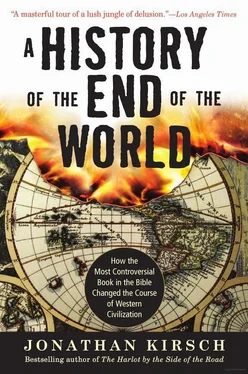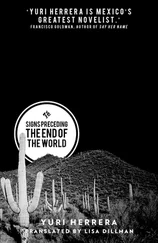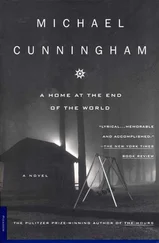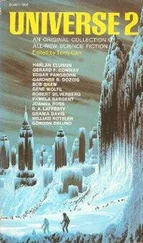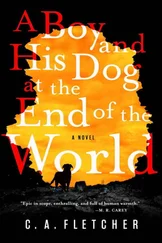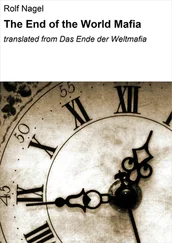112. Quoted in de la Bedoyere, Meddlesome Friar, 170.
113. Quoted in de la Bedoyere, Meddlesome Friar, 176. Another version of the same account attributes to Savonarola a slightly different remark: “A cardinal’s purple will not be bestowed on us, but of a martyr’s gown drenched in blood I am absolutely certain.” Quoted in van Paassen, 214.
114. Quoted in Van Paassen, Crown of Fire, 98.
115. Quoted in de la Bedoyere, Meddlesome Friar, 245–46.
116. Bernard McGinn, quoted in Thompson, End of Time, 80
117. Quoted in de la Bedoyere, Meddlesome Friar, 246.
118. Rev. 21:5 (KJV).
119. Robin Barnes, “Images of Hope and Despair: Western Apocalypticism: ca. 1500–1800,” in Apocalypticism, 144.
120. McGinn, Visions of the End, 88.
121. Quoted in McGinn, “Apocalypticism and Church Reform: 1100–1500,” in McGinn, 102.
122. Bernard McGinn, “The Last Judgment in Christian Tradition,” in Apocalypticism, 378.
123. Quoted in Boyer, When Time Shall Be, 225 (adapted).
124. Rev. 21:1 (KJV). (The phrase is rendered in the Vulgate, a Latin translation of the Bible, in the objective case—that is, terram novam. )
CHAPTER 6: TO BEGIN THE WORLD OVER AGAIN
1. David L. Jeffrey and Marjorie Reeves, “Millennium,” in Drane, Revelation, 46.
2. The Day of Trouble Is Near, quoted in David L. Jeffrey and Marjorie Reeves, “Millennium,” in Drane, Revelation, 46.
3. William Blake, “Jerusalem” (1804), quoted in Boyer, When Time Shall Be, 184.
4. Blake, “Jerusalem” (1804), quoted in Boyer, When Time Shall Be, 184.
5. Not every historian is quite so convinced, however. “Whether or not English Puritans justified their removal to the New World in eschatological terms is an issue that has divided the scholarly community since the 1980s.” Reiner Smolinski, “Apocalypticism in Colonial North America,” in Stein, Apocalypticism, 36.
6. Quoted in Boyer, When Time Shall Be, 68.
7. Cotton Mather, quoted in Boyer, When Time Shall Be, 69 (“Flying from the Depravations…”); http://www.mytholyoke.edu/acad/intrel/winthrop.htm (“a City Upon a Hill…”); Perry Miller, quoted in Wagar, Terminal Visions, 59 (“the first bestseller…”).
8. Quoted in Boyer, When Time Shall Be, 64.
9. Quoted in Robin Barnes, “Images of Hope and Despair: Western Apocalypticism: ca. 1500–1800,” in Apocalypticism, 163.
10. Quoted in Thompson, End of Time, 92 (adapted).
11. Quoted in Boyer, When Time Shall Be, 64.
12. Bartholomew Fair (1614), quoted in Boyer, When Time Shall Be, 64.
13. Quoted in McGinn, in Alter and Kermode, Literary Guide, 537.
14. Paraphrased in Boyer, When Time Shall Be, 65.
15. Boyer, When Time Shall Be, 67.
16. Perry Miller, “The End of the World” (1950), paraphrased in (and adapted from) Boyer, When Time Shall Be, 67.
17. Cotton Mather, Memorable Providences, Relating to Witchcrafts and Possessions (1689), http://www.law.umkc.edu/faculty/projects/ftrials/salem/ASA_MATH.HTM.
18. Quoted in Wendell, Cotton Mather, 207.
19. Thompson, End of Time, 96.
20. Magnalia Christi Americana, quoted in David L. Jeffrey and Marjorie Reeves, “Millennium,” in Drane, Revelation, 46.
21. Quoted in Wendell, Cotton Mather, 82.
22. Quoted in Reiner Smolinski, “Apocalypticism in Colonial North America,” in Stein, Apocalypticism, 52.
23. Quoted in Boyer, When Time Shall Be, 70.
24. Emma Lazarus, “The New Colossus,” www.sonnets.org/lazarus.
25. Cotton Mather on John Mather, quoted in Wendell, Cotton Mather, 9.
26. The Jefferson Bible, http://www.angelfire.com/co/JeffersonBible/jeffintro.html.
27. A Sermon Preached Before the Honorable Council, May 29th, 1776, quoted in Reiner Smolinski, “Apocalypticism in Colonial North America,” in Stein, Apocalypticism, 68.
28. Quoted in Boyer, When Time Shall Be, 74.
29. Reiner Smolinski, “Apocalypticism in Colonial North America,” in Stein, Apocalypticism, 55.
30. Smolinski, “Apocalypticism in Colonial North America,” in Stein, Apocalypticism, 55.
31. Quoted in Reiner Smolinski, “Apocalypticism in Colonial North America,” in Stein, Apocalypticism, 56.
32. Paul Boyer, “The Growth of Fundamentalist Apocalyptic in the United States,” in Stein, Apocalypticism, 144 (adapted).
33. Boyer, “The Growth of Fundamentalist Apocalyptic in the United States,” in Stein, Apocalypticism, 144–45; Matt. 25:40 (KJV).
34. Richard T. Ely (1854–1943), quoted in James H. Moorhead, “Apocalypticism in Mainstream Protestantism, 1800 to the Present,” in Stein, Apocalypticism, 95.
35. Samuel Hopkins, Treatise of the Millennium (1793), quoted in Reiner Smolinski, “Apocalypticism in Colonial North America,” in Stein, Apocalypticism, 61.
36. Ladies’ Repository (February 1850), quoted in James H. Moorhead, “Apocalypticism in Mainstream Protestantism, 1800 to the Present,” in Stein, Apocalypticism, 76.
37. John L. O’Sullivan, “The Great Nation of Futurity” (1839), Cornell University Library, http://cdl.library.cornell.edu.
38. Dan. 8:14 (KJV).
39. Quoted in Ehrman, Jesus, 13.
40. Quoted in Stephen J. Stein, “Apocalypticism Outside the Mainstream in the United States,” in Stein, Apocalypticism, 116.
41. Paul Boyer, “The Growth of Fundamentalist Apocalyptic in the United States,” in Stein, Apocalypticism, 146.
42. Quoted in Thompson, End of Time, 100.
43. Weber, Living in the Shadow, 42.
44. Quoted in Boyer, When Time Shall Be, 81.
45. Quoted in Thompson, End of Time, 100.
46. Quoted in Stephen J. Stein, “Apocalypticism Outside the Mainstream in the United States,” in Stein, Apocalypticism, 116.
47. Rev. 11:19 (KJV).
48. Thompson, End of Time, 287.
49. Fox, Jesus in America, 253.
50. Fox, Jesus in America, 255.
51. Quoted in Stephen J. Stein, “Apocalypticism Outside the Mainstream in the United States,” in Stein, Apocalypticism, 114.
52. Fox, Jesus in America, 254.
53. James H. Moorhead, “Apocalypticism in Mainstream Protestantism, 1800 to the Present,” in Stein, Apocalypticism, 73 (adapted).
54. Rev. 14:19 (KJV). See also Isa. 63:3.
55. http://www.cyberhymnal.org.
56. Quoted in James H. Moorhead, “Apocalypticism in Mainstream Protestantism, 1800 to the Present,” in Stein, Apocalypticism, 85.
57. Weber, Living in the Shadow, 83.
58. Boyer, When Time Shall Be, 92, quoting John Charles Ryle.
59. Robin Barnes, “Images of Hope and Despair: Western Apocalypticism: ca. 1500–1800,” in Apocalypticism, 172 (“…the triumph and rule of the true church…”); Paul Boyer, “The Growth of Fundamentalist Apocalyptic in the United States,” in Stein, Apocalypticism, 143 (“…human progress and moral advance…”).
60. Quoted in James H. Moorhead, “Apocalypticism in Mainstream Protestantism, 1800 to the Present,” in Stein, Apocalypticism, 81.
61. 1 Thess. 4:16–17 (RSV).
62. Weber, Living in the Shadow, 22.
63. Weber, Living in the Shadow, 21.
Читать дальше
